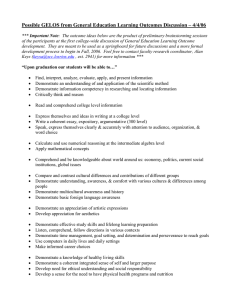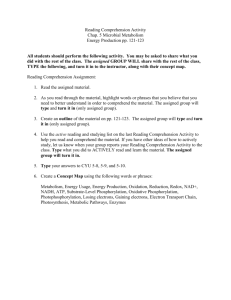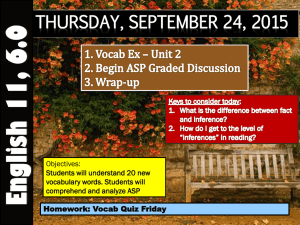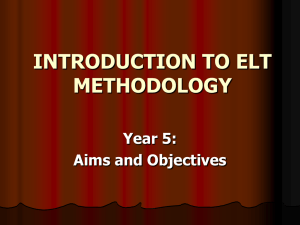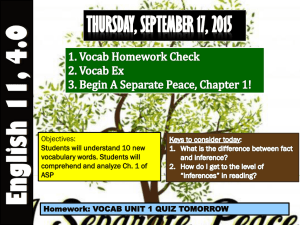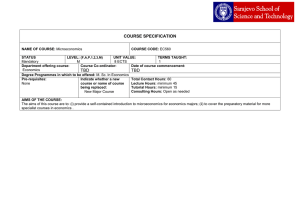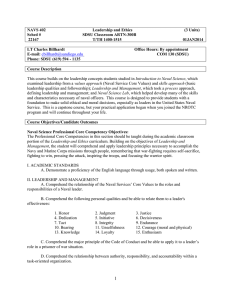Paola Dalmonech ELE 203.1456 – Language and Literacy in Childhood Education Prof.Sterling-Deer
advertisement
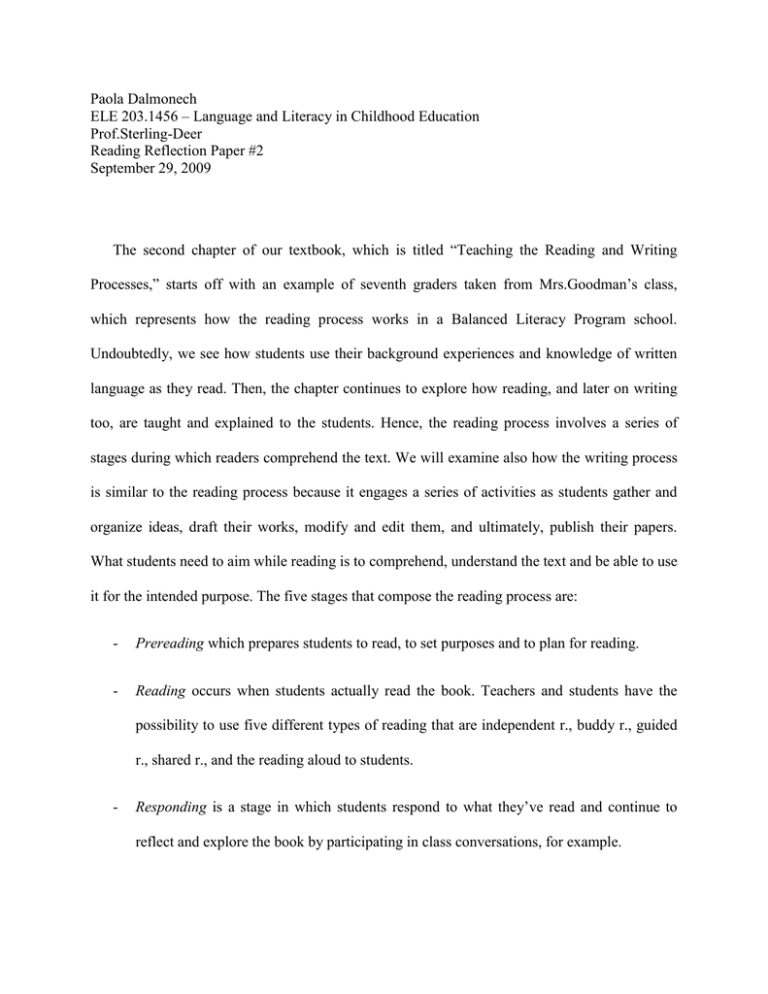
Paola Dalmonech ELE 203.1456 – Language and Literacy in Childhood Education Prof.Sterling-Deer Reading Reflection Paper #2 September 29, 2009 The second chapter of our textbook, which is titled “Teaching the Reading and Writing Processes,” starts off with an example of seventh graders taken from Mrs.Goodman’s class, which represents how the reading process works in a Balanced Literacy Program school. Undoubtedly, we see how students use their background experiences and knowledge of written language as they read. Then, the chapter continues to explore how reading, and later on writing too, are taught and explained to the students. Hence, the reading process involves a series of stages during which readers comprehend the text. We will examine also how the writing process is similar to the reading process because it engages a series of activities as students gather and organize ideas, draft their works, modify and edit them, and ultimately, publish their papers. What students need to aim while reading is to comprehend, understand the text and be able to use it for the intended purpose. The five stages that compose the reading process are: - Prereading which prepares students to read, to set purposes and to plan for reading. - Reading occurs when students actually read the book. Teachers and students have the possibility to use five different types of reading that are independent r., buddy r., guided r., shared r., and the reading aloud to students. - Responding is a stage in which students respond to what they’ve read and continue to reflect and explore the book by participating in class conversations, for example. - Exploring requires students to examine the book in a deeper way. Teachers ask students to focus and concentrate on a particular word or sentence by looking at it more analytically. - Applying. At this moment, students are supposed to expand their comprehension towards the book. To do so, they are going to create some projects that will show what they’ve learned. At this particular point, the book presents the reading strategies and skills. A distinction is made between strategies and skills. Strategies represent the thinking that readers do as they read, whereas skills are quick, automatic behaviors that don’t require any thought. One important example for strategies could be the comprehension strategy where students understand what they are learning by drawing pictures, by predicting… Related to this part of the reading process, the skill would be the recognition of details and connecting them to main ideas. Similarly to the reading process, the writing process is formed by five stages that describe what students think as they write: - Prewriting which includes talking, brainstorming, and reading to see if students are able to direct the choice of a topic. - Drafting is the writing act of a composition and the getting ideas down on paper. - Revising. Here, students refine ideas in their works. They get the chance to edit, delete, substitute, and revise on the basis of feedback. - Editing consists in putting the piece of writing into its final form. The teachers suggest to proofread students’ papers to see if they can locate any possible mistake. - Publishing is the final stage where students’ papers are ready to be shared with any kind of audience. For the writing process, a list of strategies and skills is also listed. A student is skilled when she/he is able to correct grammatical error, or to revise a phrase because that word was not clear enough. Minilessons are usually taught to give students the qualities of good writing. In this way, they are capable of evaluating and organizing their paper because the goal is to improve the quality of their writing. Teachers understand that reading and writing are reciprocal, meaning-making processes. The stages are similar because they begin from a preparation of the activity that students are going to confront, to then, gradually, follow the other stages that will lead them to their primary goal; reading and comprehend a book or writing a composition. I do agree with the statement that claims that reading and writing are interconnected and that if you do a good job in reading, then you are going to have lots of advantages in writing (Spivey, 1997, p.65). I believe that reading and writing accurately represent the two most important activities for building the knowledge required for eventual success in these fields. Therefore, what researchers have found is true. In other words, if you are a good reader, you consequently become a good writer and vice versa. My motto is, “The more you read, and the better you write!”

